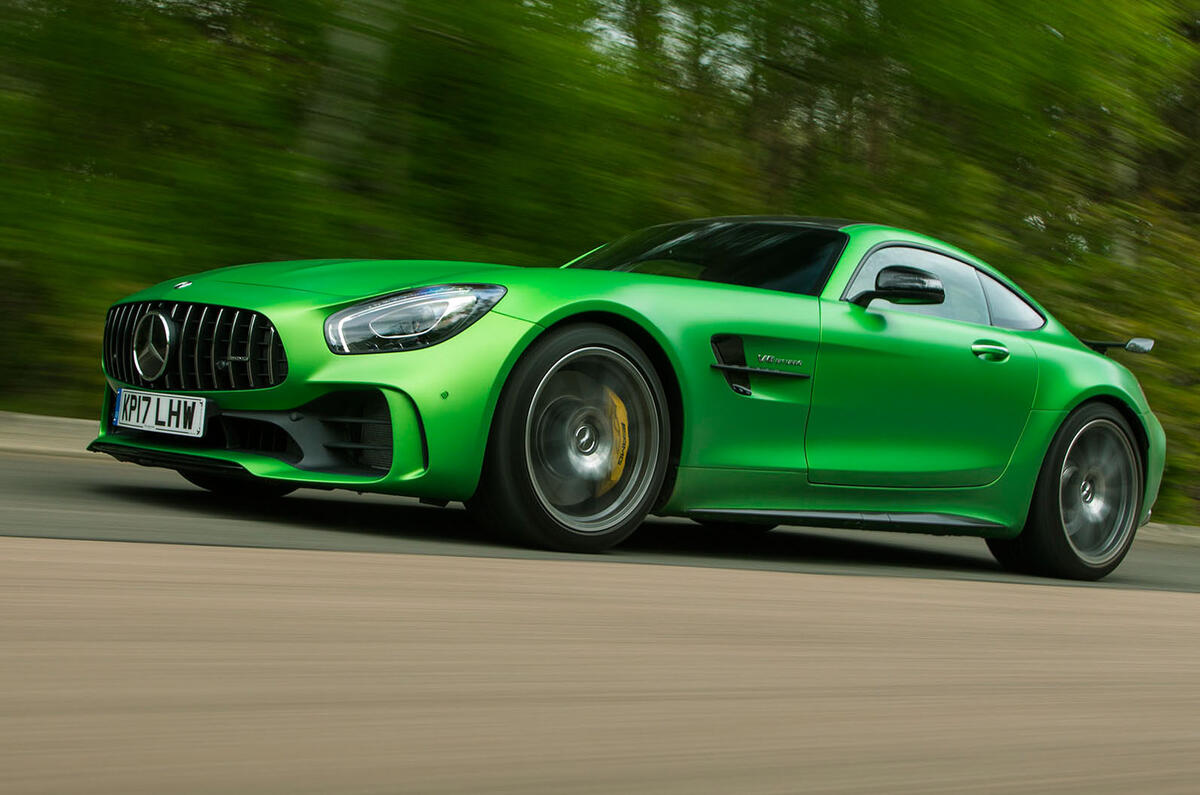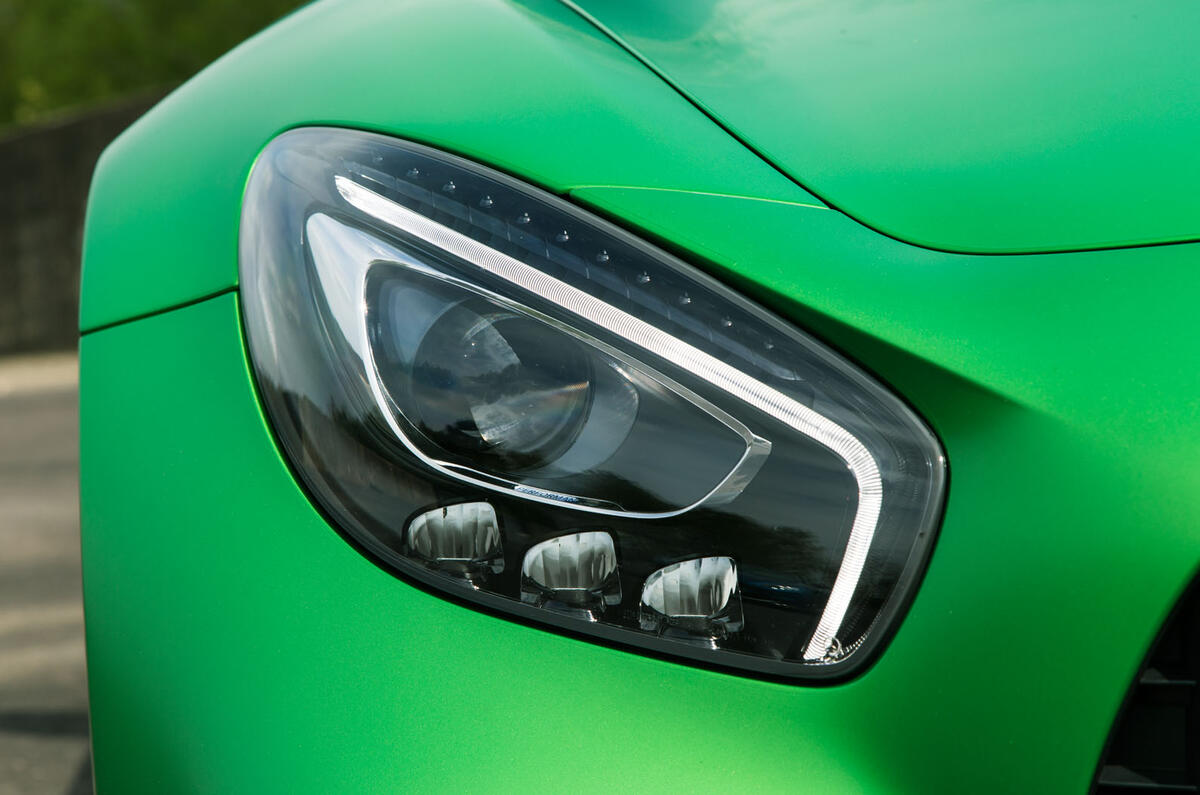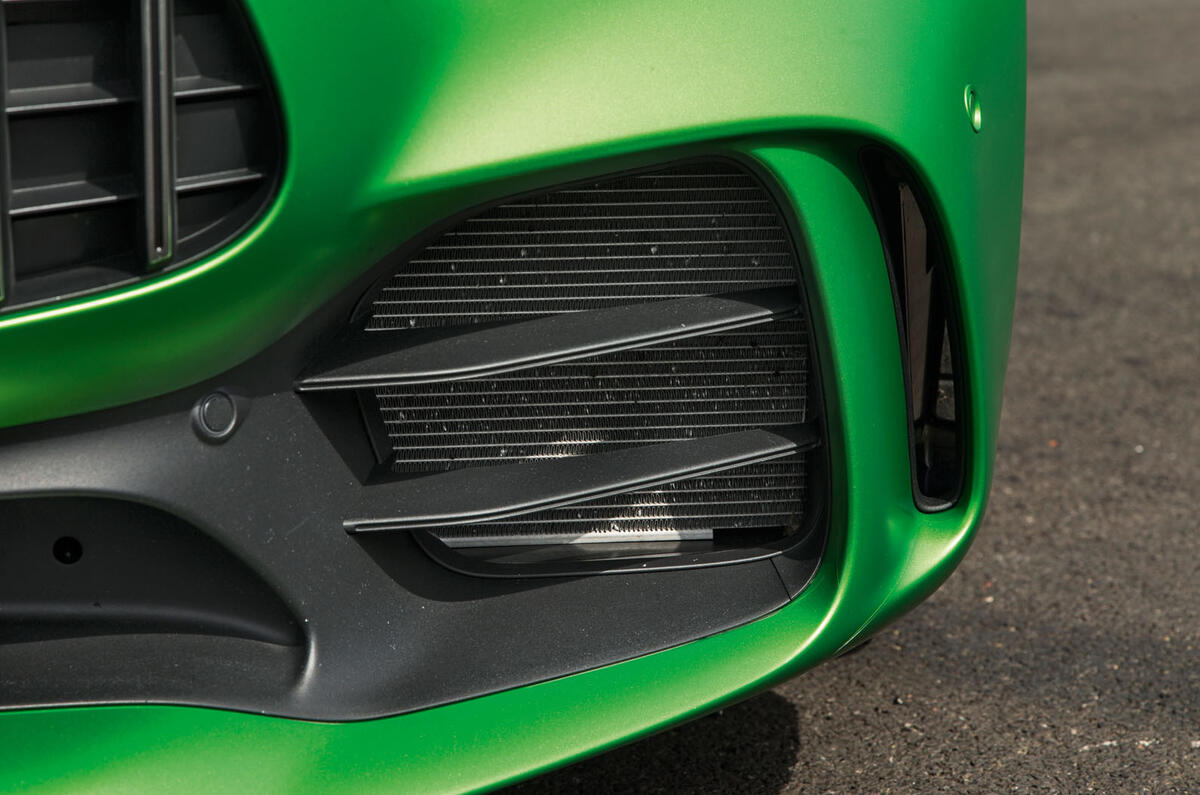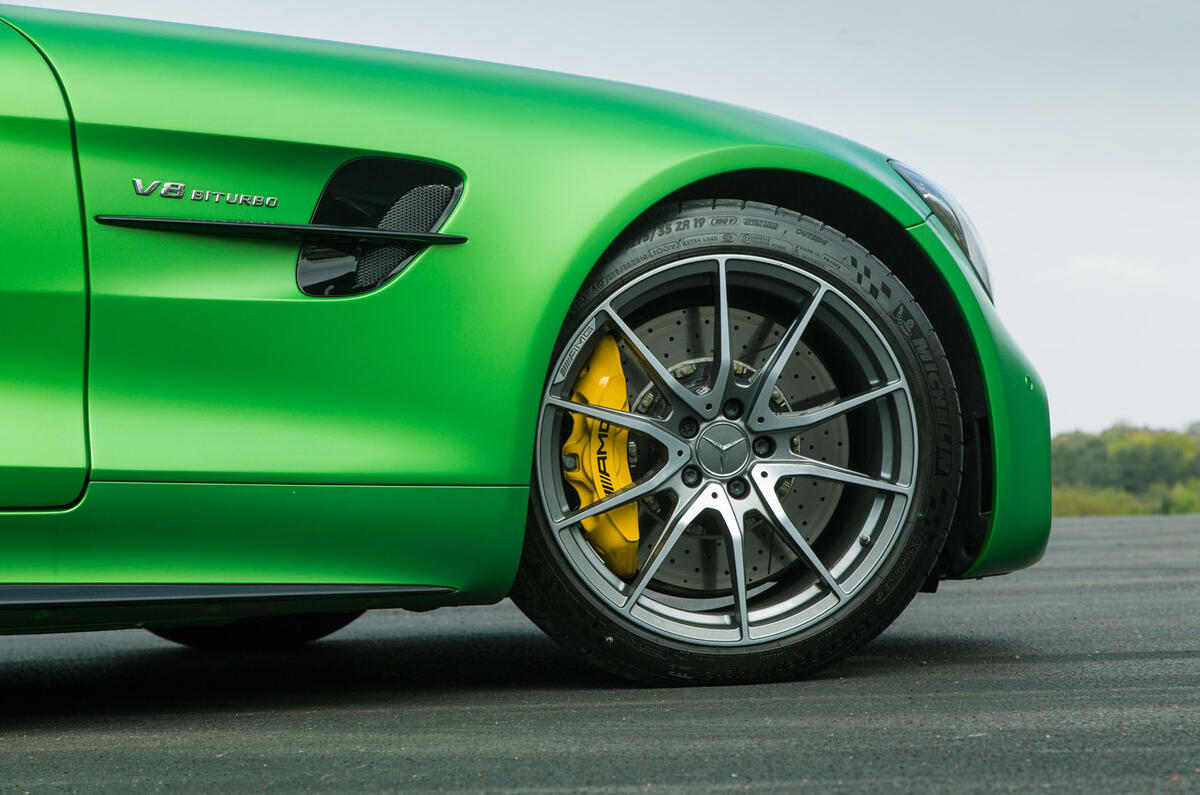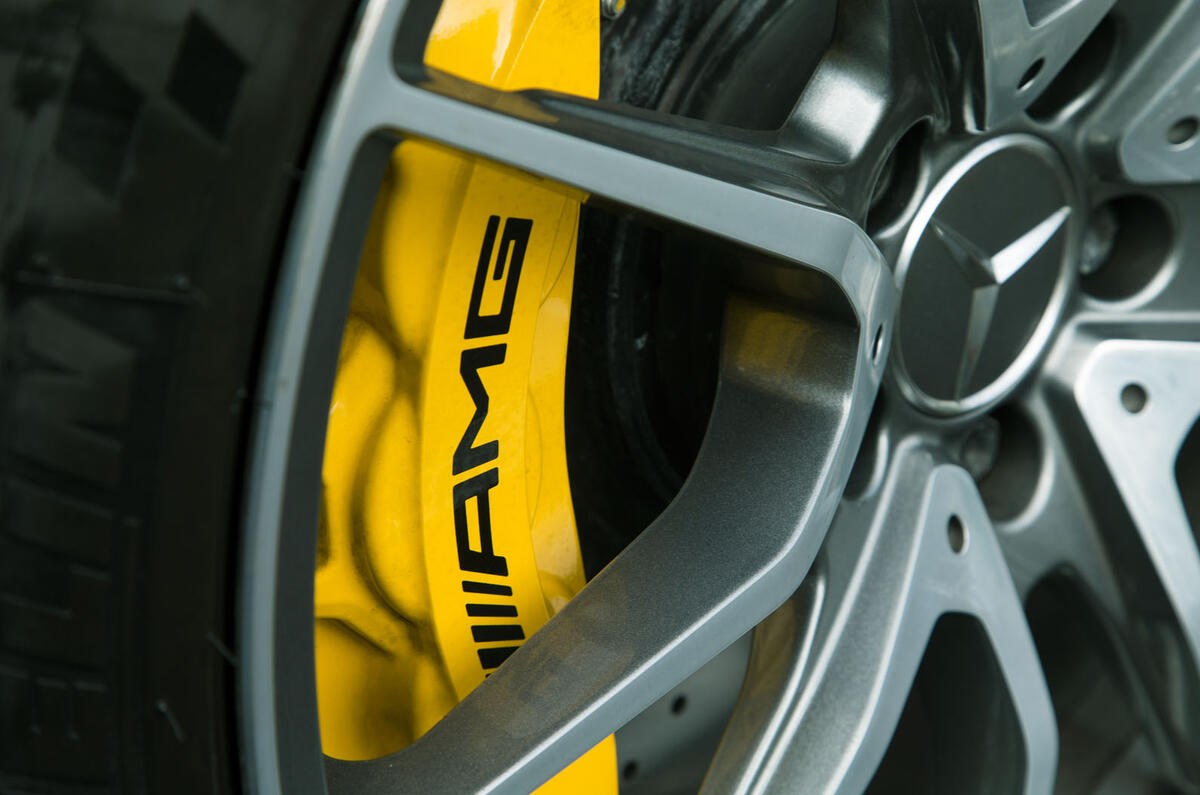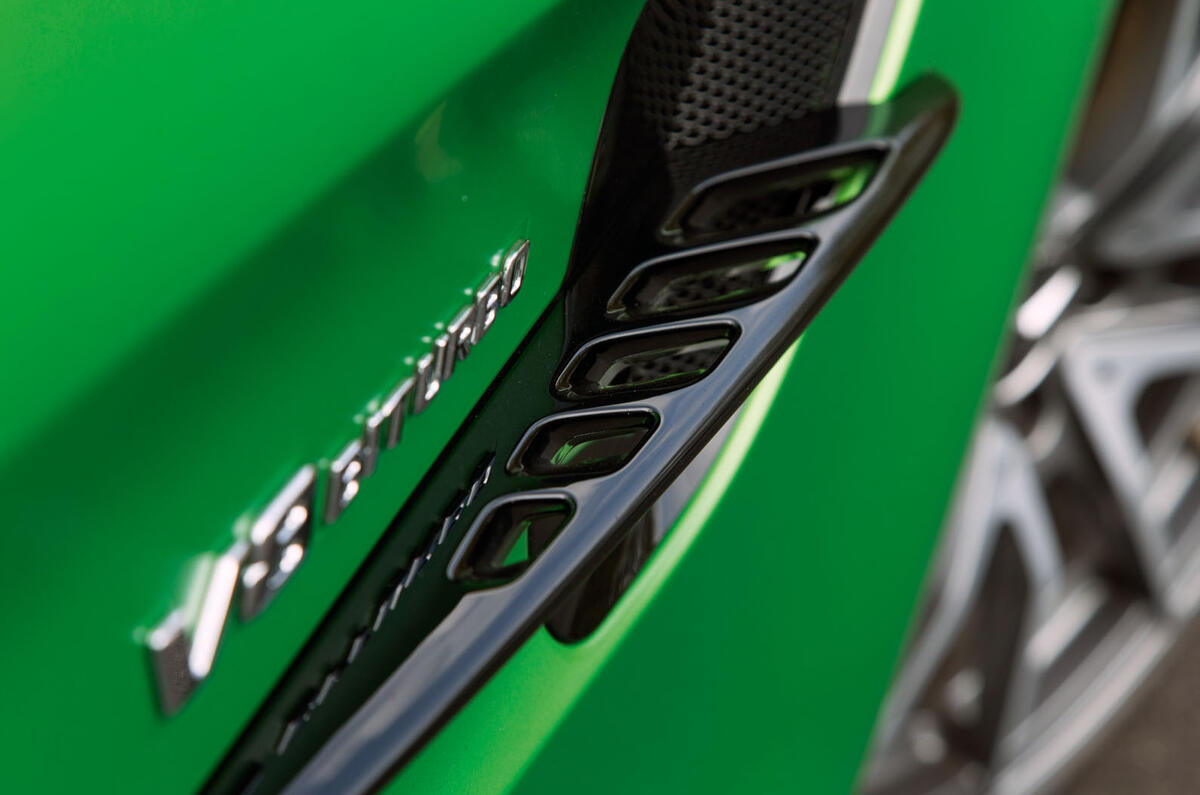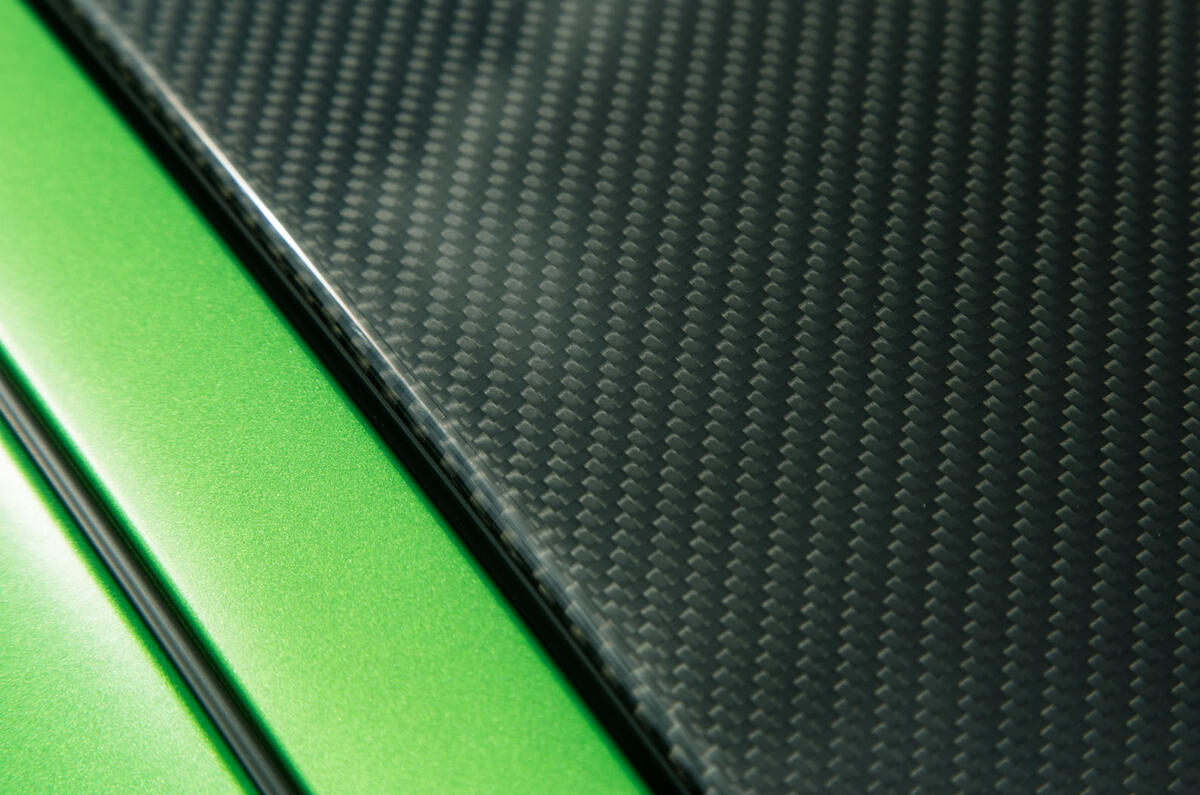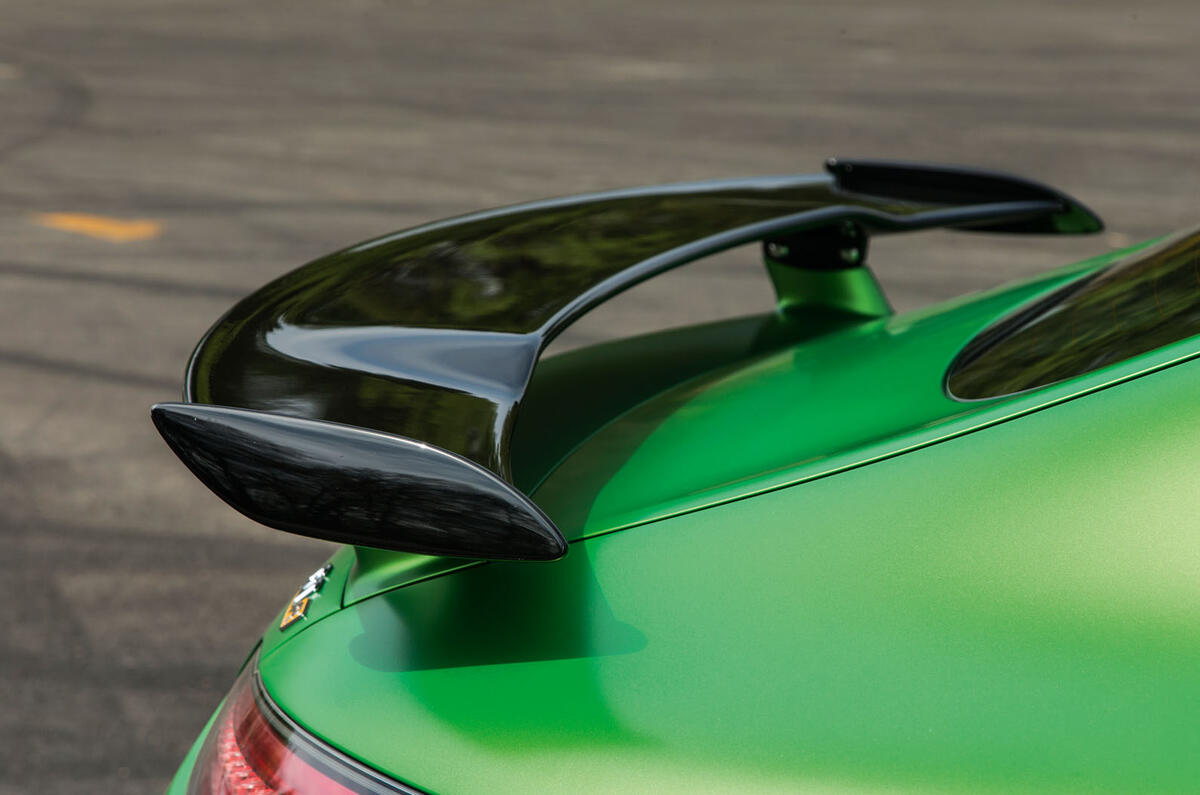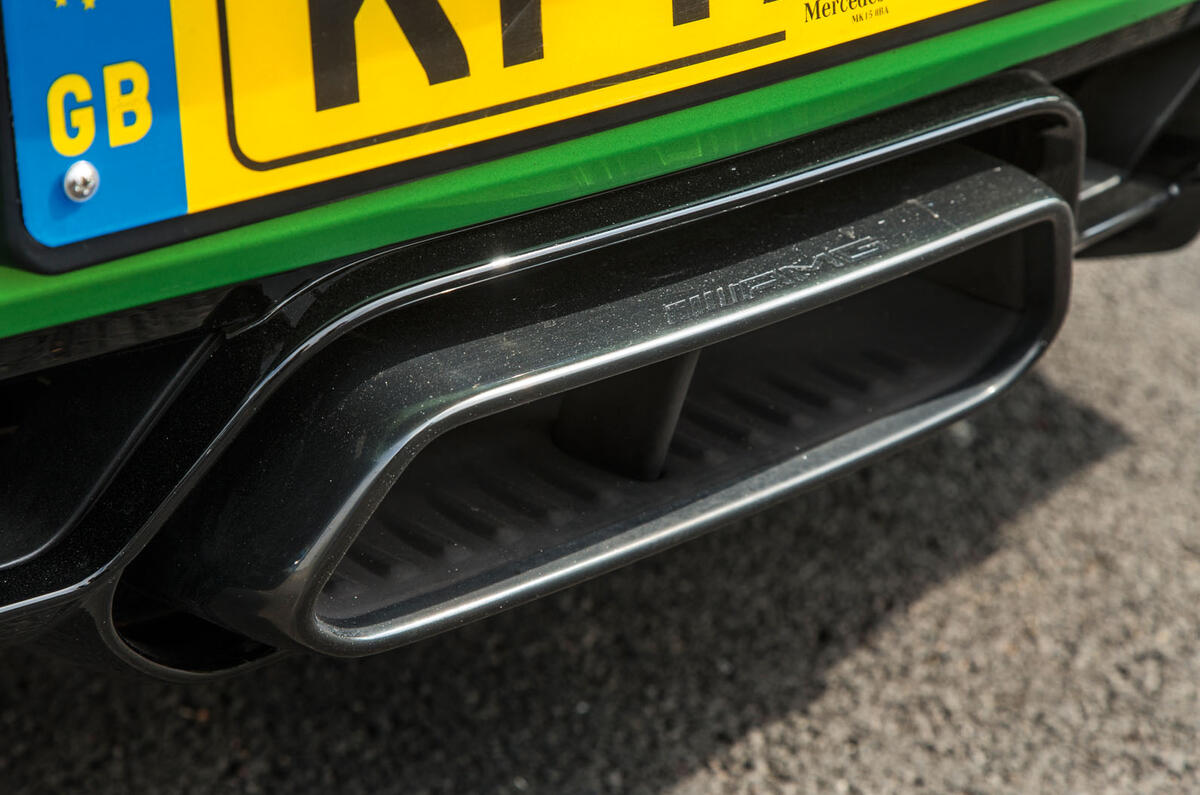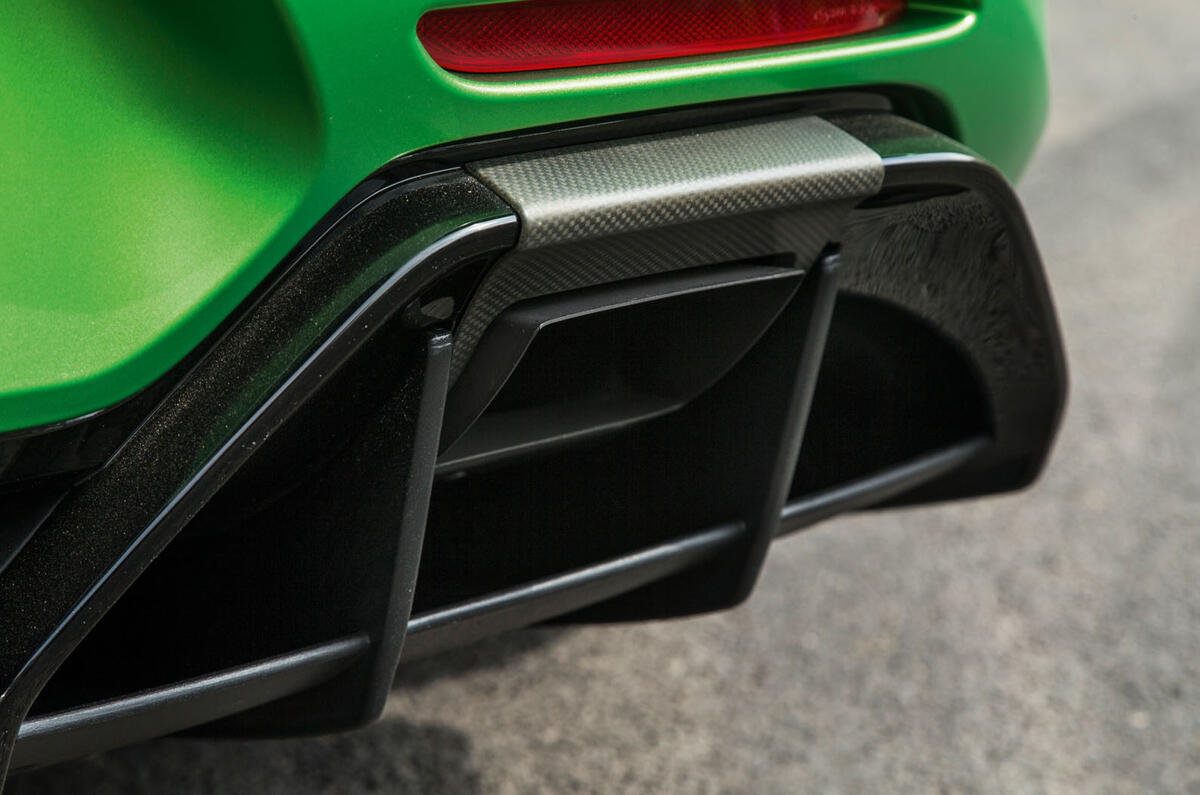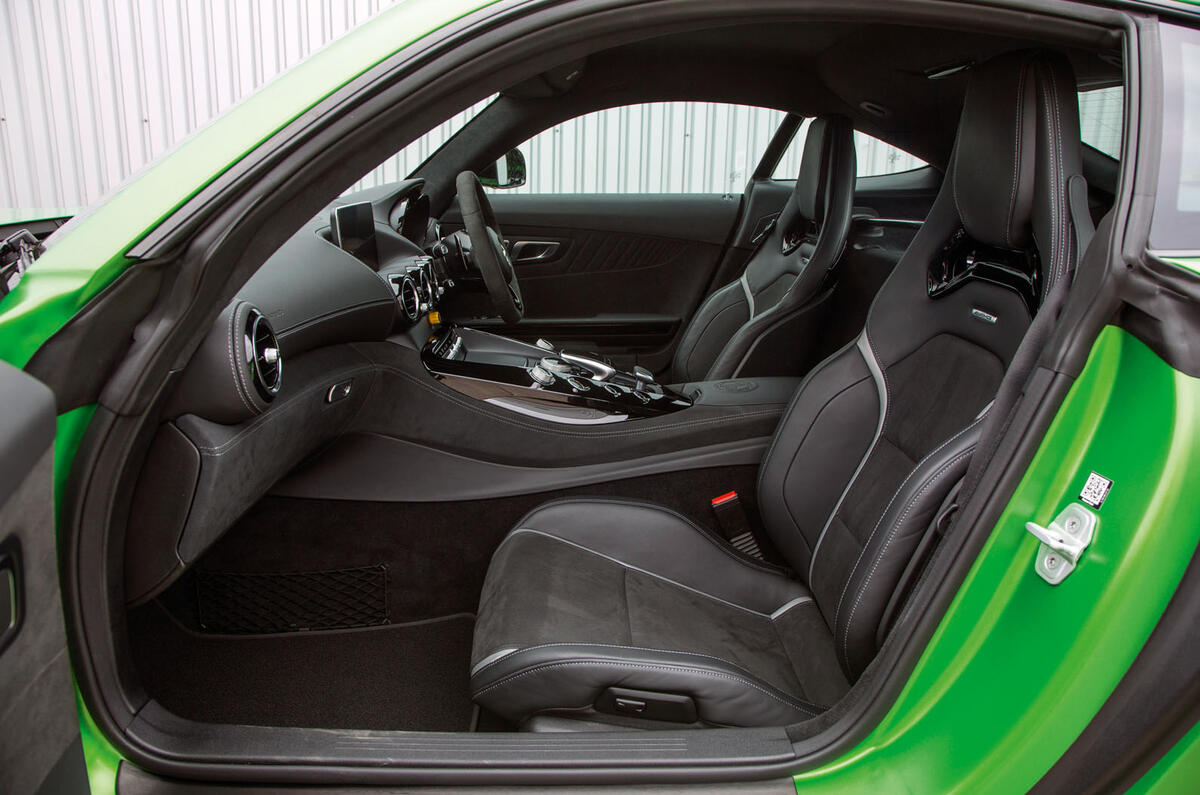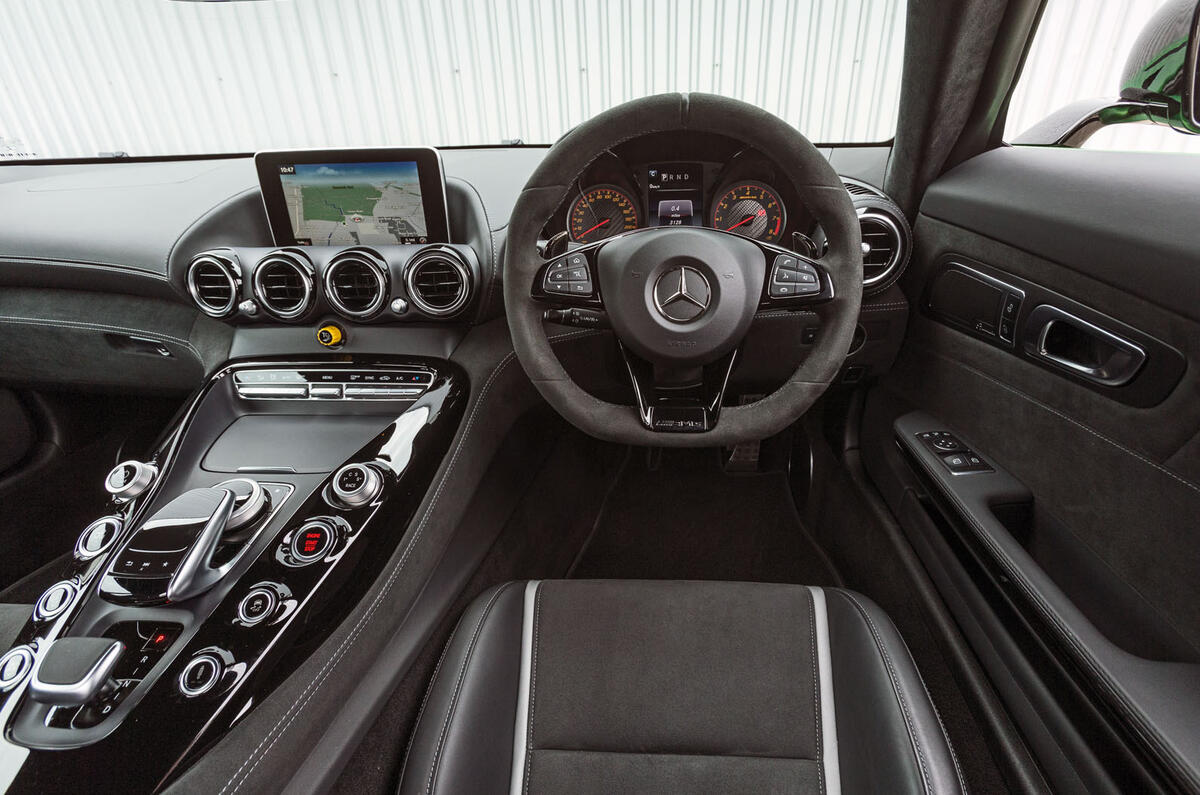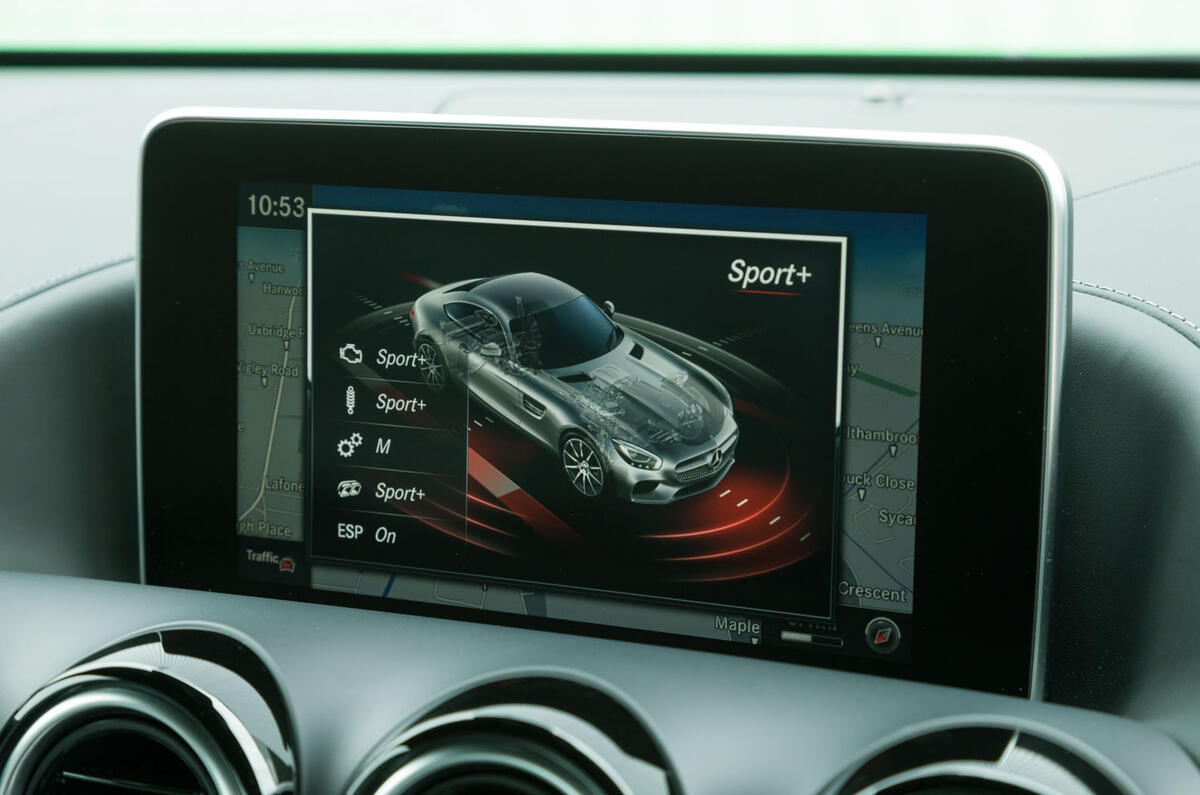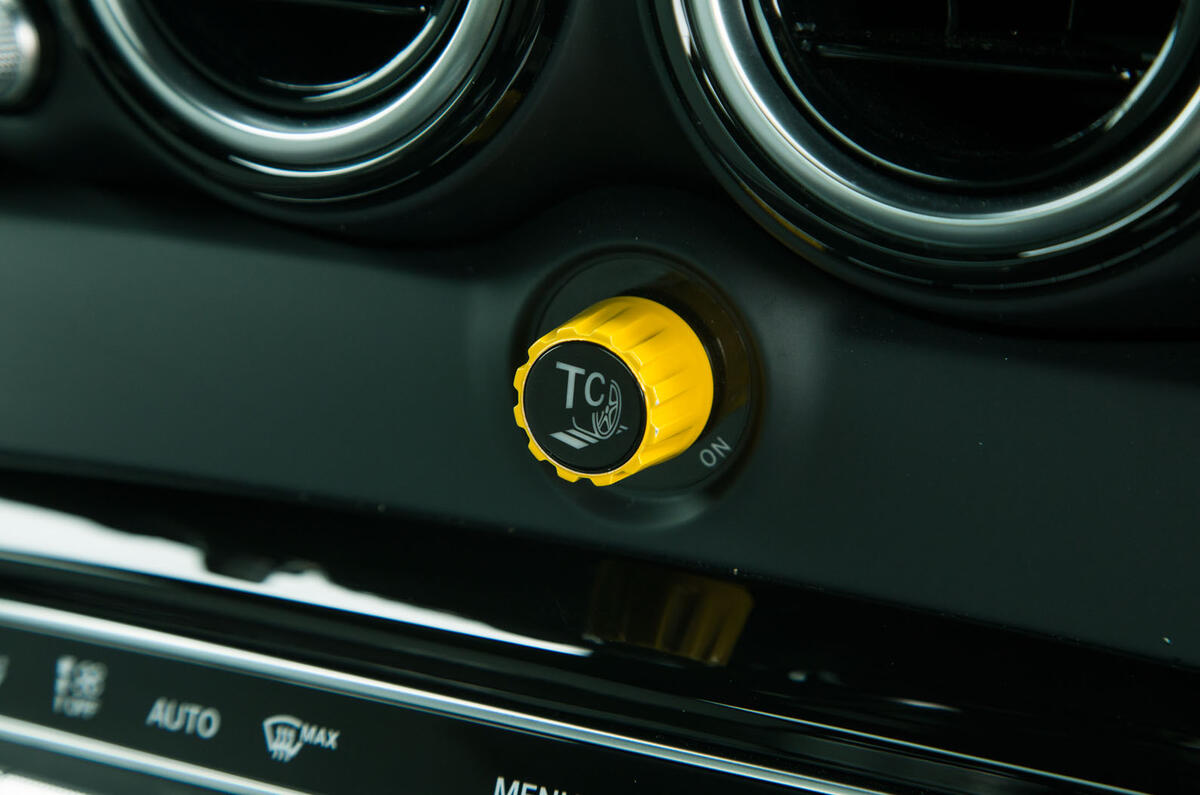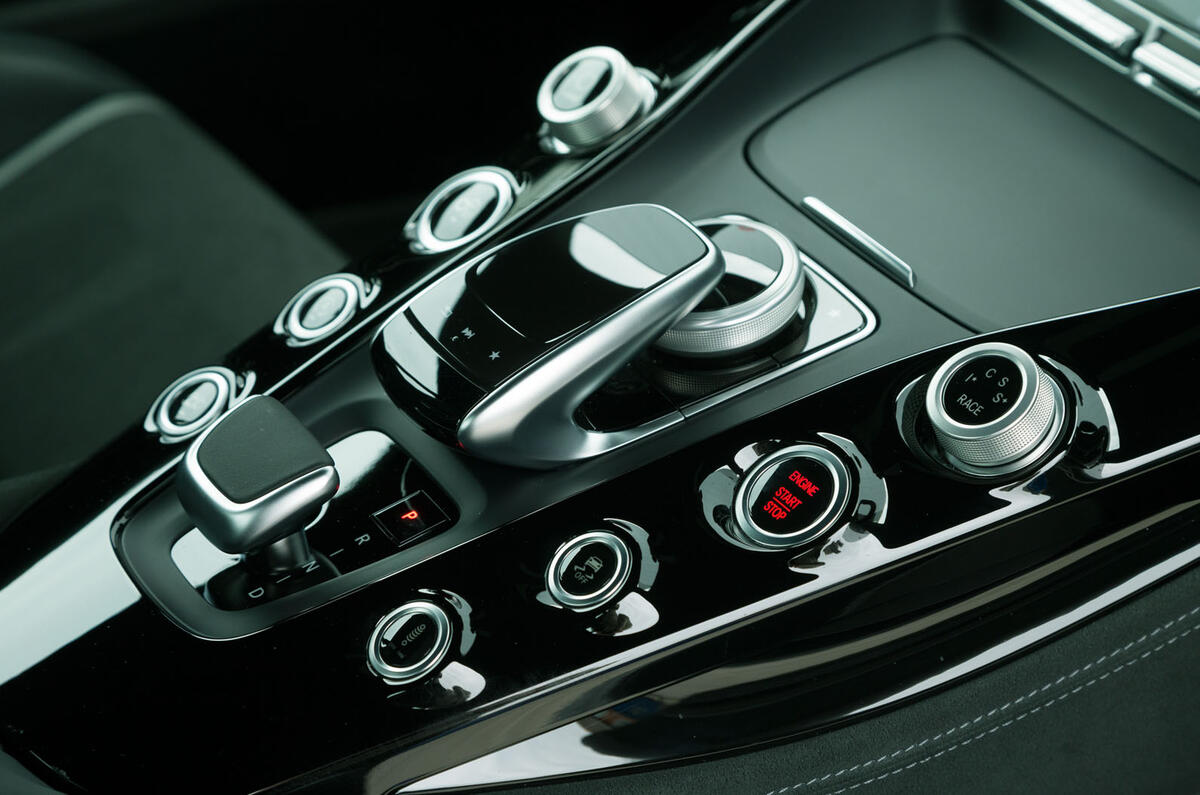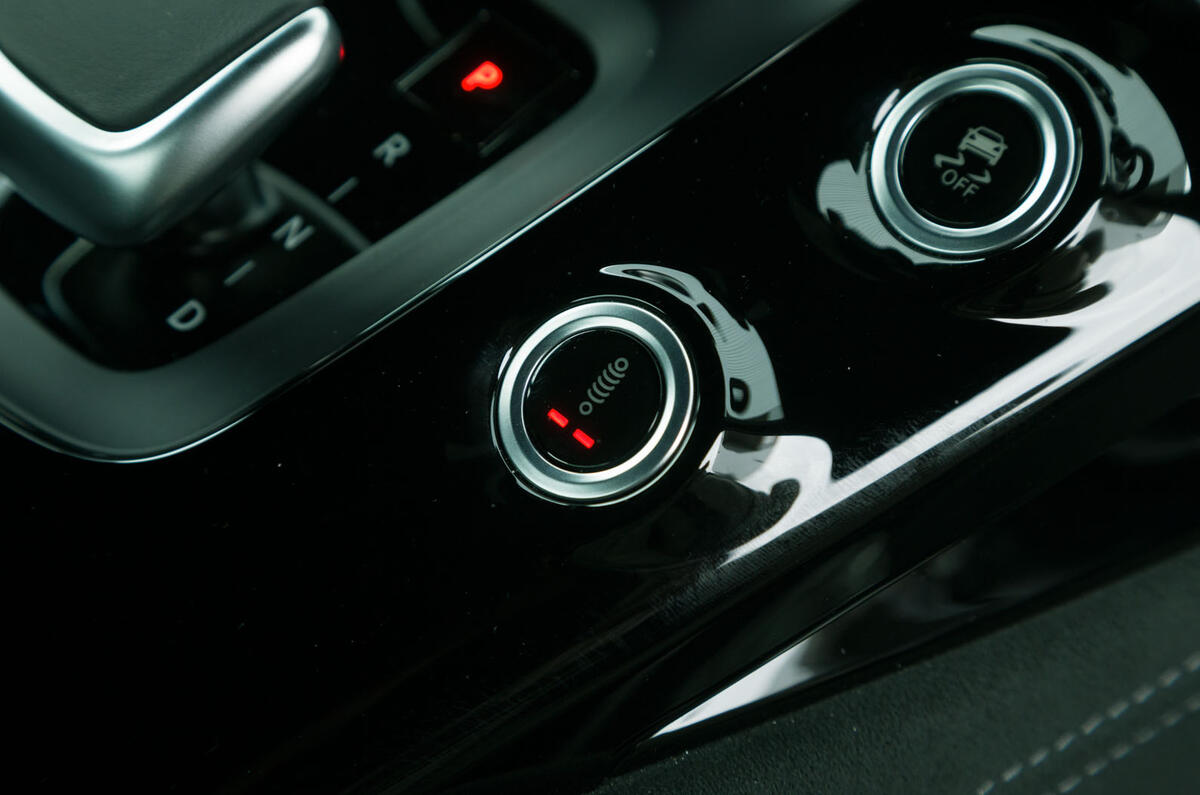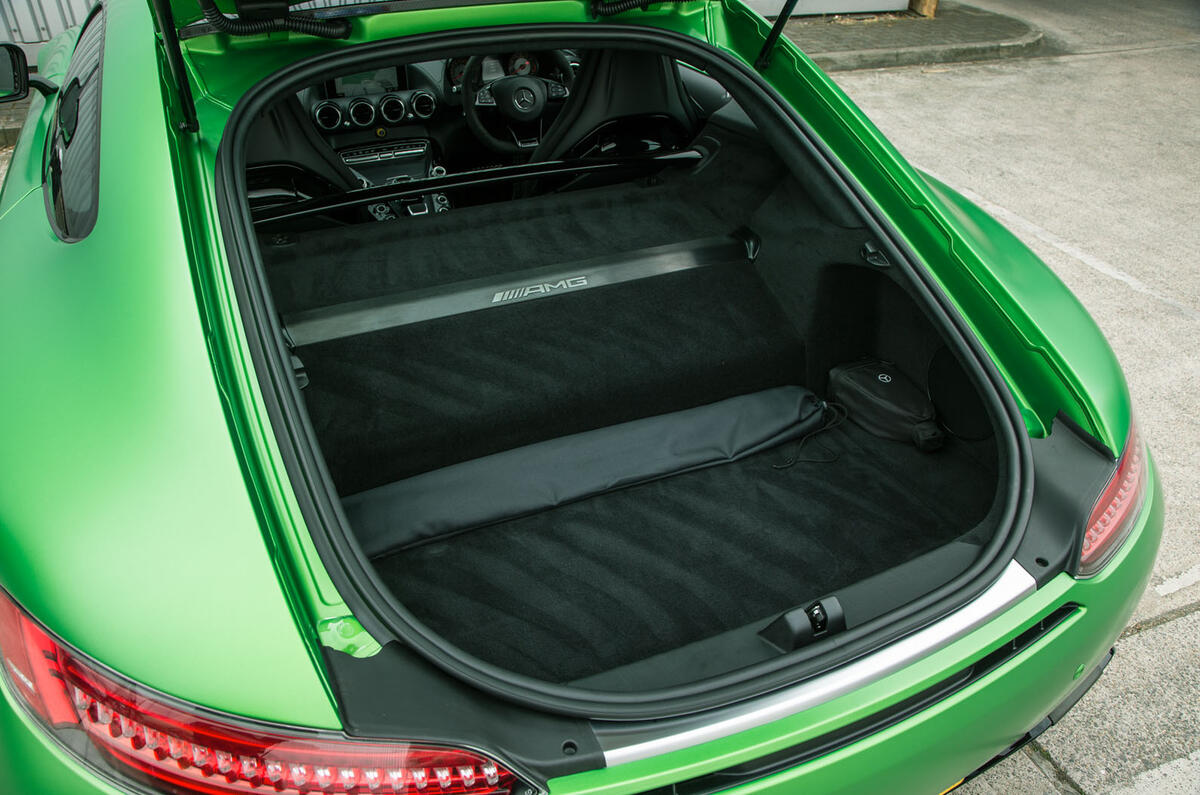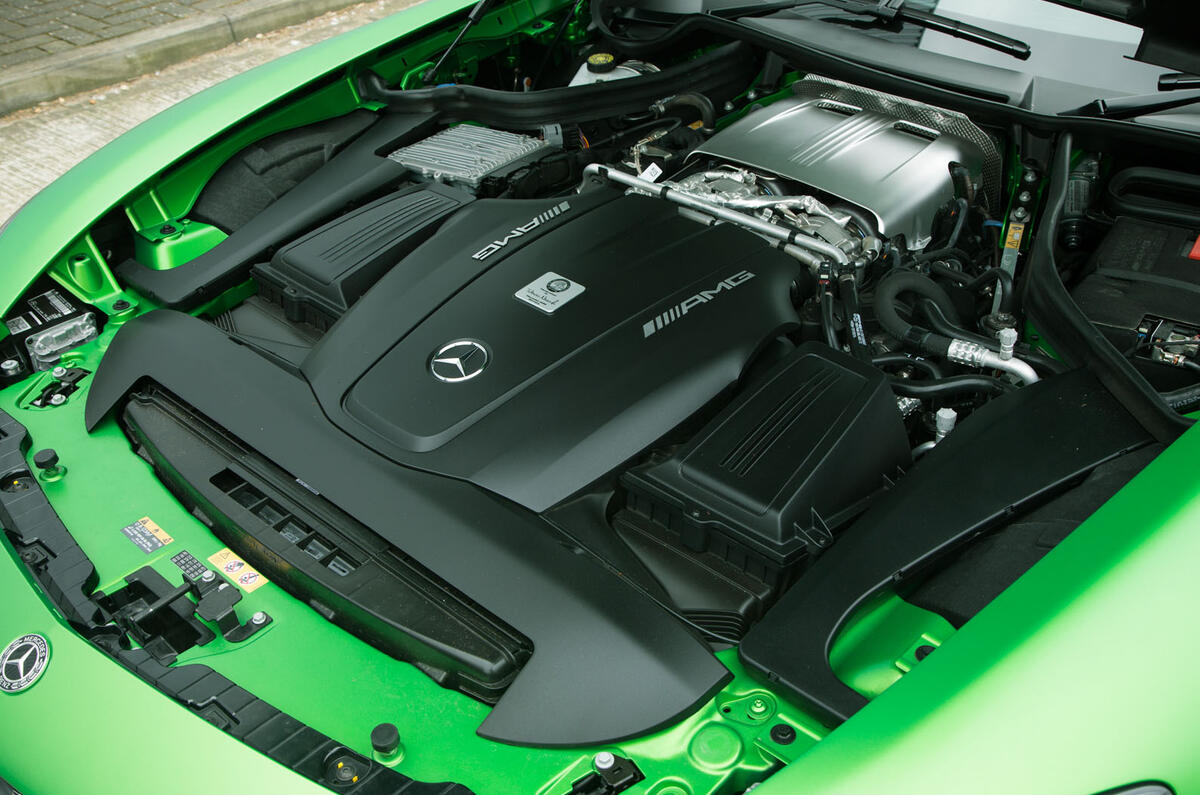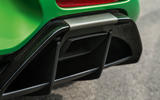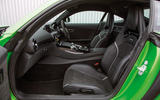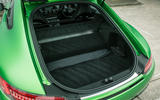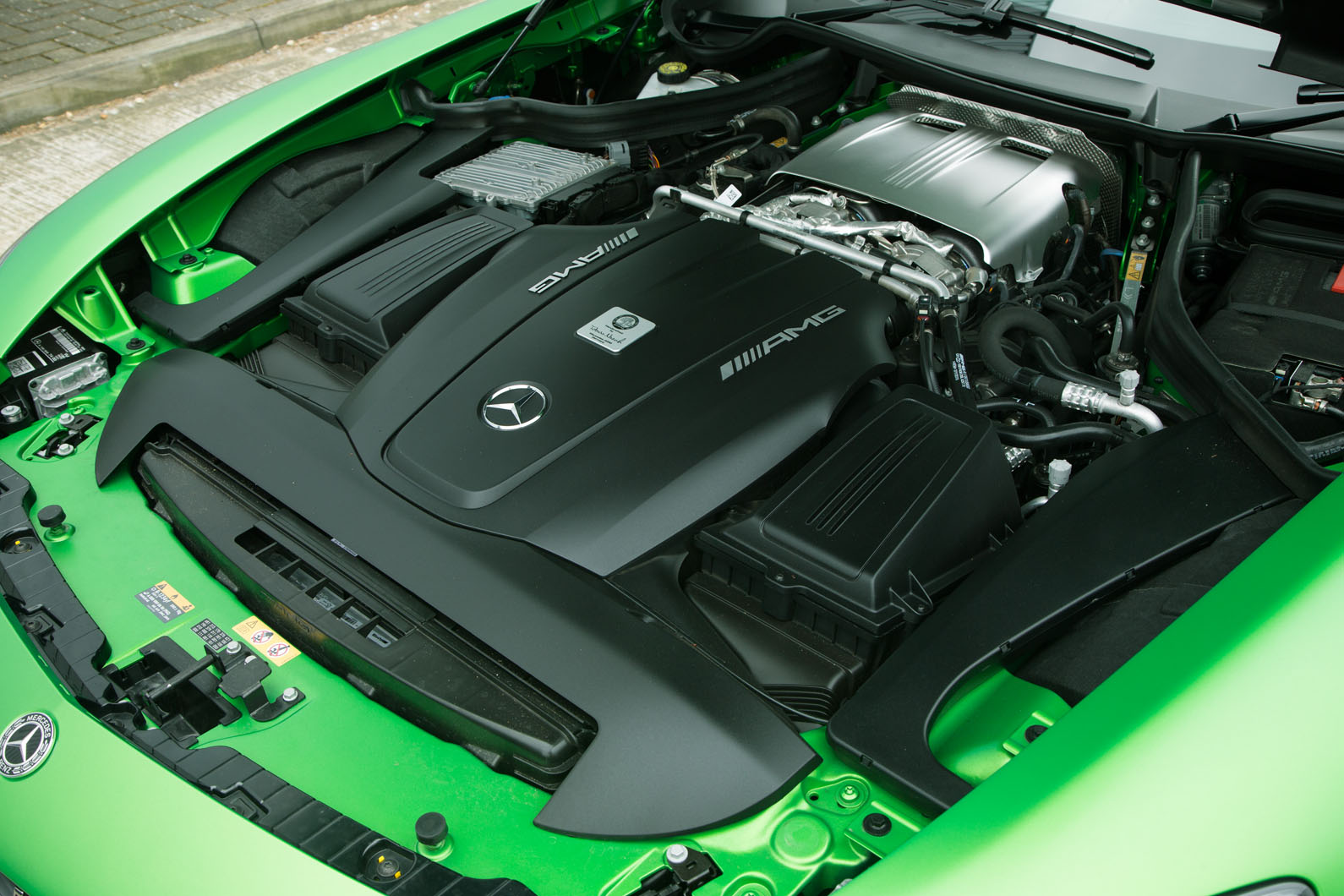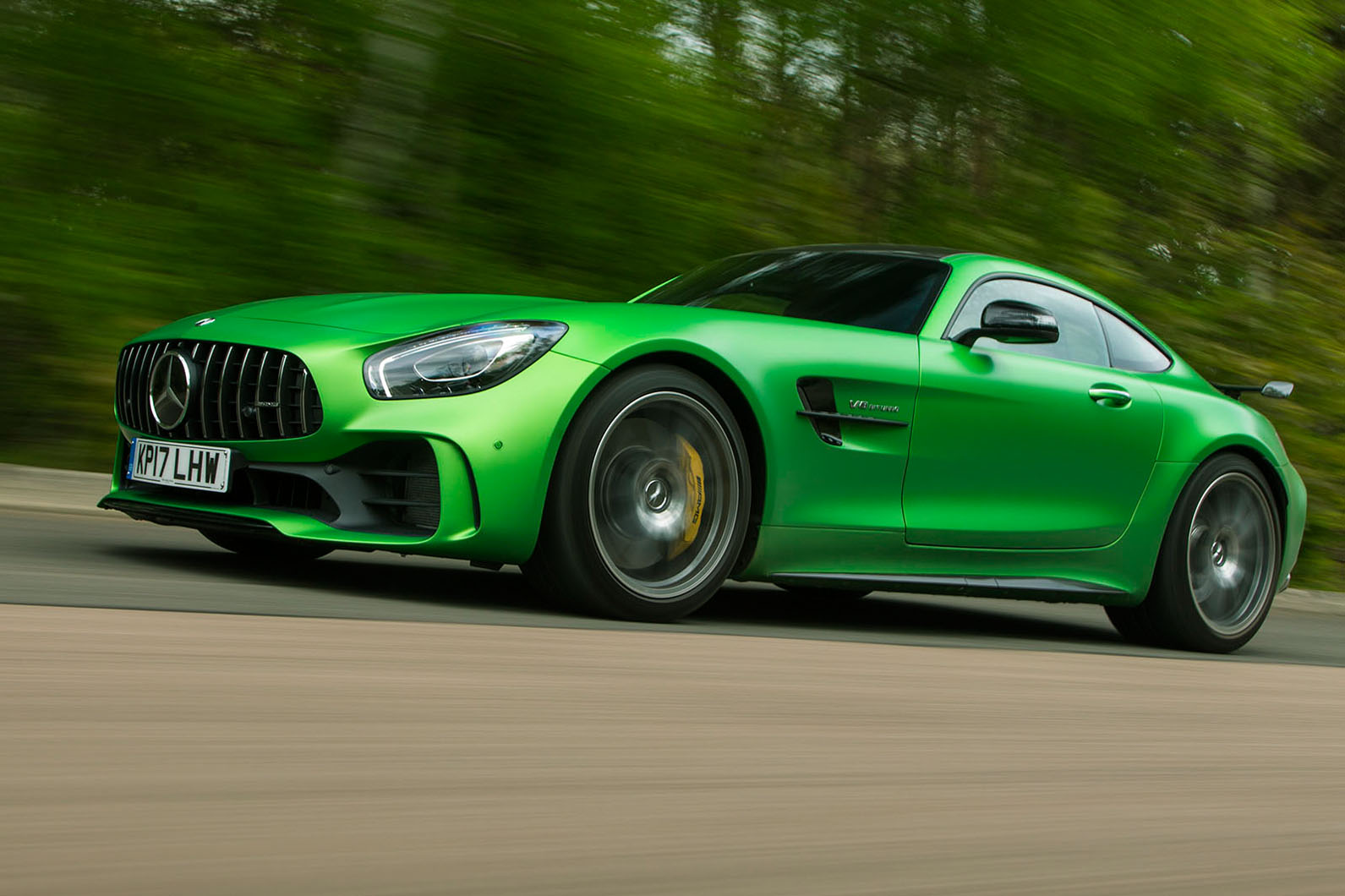A lighter AMG GT this might be, but don’t expect the GT R to have a stripped-out interior like a GT-badged Porsche.
Inside, the R is very much like the other Mercedes-AMG GT coupes in the line-up when it comes to retaining comfort and equipment.
Yes, there is more Alcantara – and very nice it is, too – and bucket seats with holes in the back to allow four-point harnesses to be threaded through them (as Mercedes-AMG will do on your behalf if you tick the Track Pack option).
But the R remains a very luxurious ‘Mercedes’ take on the whole hardcore sports car concept – and it’s none the worse for it.
The driving position is good, as is the passenger’s. The windscreen looms small while the nose of the car disappears into the yonder, but visibility is generally fine. You can sit genuinely low if you want to, although don’t need to. The steering wheel manually adjusts willingly and is backed by neat, glossy paddles that turn with the wheel.
There’s also a slathering of Alcantara on it, a minimal flattening out of round and a coloured tell-tale so you know when it’s pointing at noon.
On the tall, wide transmission tunnel you get the obligatory stubby AMG gearlever, surrounded by lots of controls that cover the various different drive modes and options – selectable all apiece in one rotary knob, or tweakable in detail by individually changing the exhaust note, damper stiffness and so on.
In the R there is one extra control: a curious round yellow dial in the kind of place a car maker might usually put the hazard light switch.
Here, though, it’s to adjust the multi-stage traction control, which becomes active once you’ve deactivated the stability control. Because it’s so small, when you twist it its settings are displayed on the large central screen, which is also home to Mercedes’ usual array of communications and entertainment – nothing is given up here for the pursuit of performance.
Ditto when it comes to practicality. A GT is less practical than a Porsche 911 owing to the packaging, but the tailgate opens onto a surprisingly big boot and area behind the rear seats.
Thankfully, the R doesn’t miss out on the multimedia set-up that a Mercedes-Benz usually gets. It always strikes us as odd that you can end up losing the audio and communications kit on cars that still weigh the best part of a tonne and three quarters, just to save 20kg.
So the full complement of Mercedes navigation and sound systems is here and, although the audio has a lot of road and engine noise to overcome, it does a manful job.
There are multiple USB sockets and it’s simple enough to hook up a telephone to the Comand system, which is controlled not by touchscreen but by a rotary dial, above which sits a touch pad.
The pad is a relatively recent Mercedes invention aimed at increasing the way you can control the system, but you’ll find yourself hovering your wrist sometimes while turning the dial so you don’t inadvertently knock a button. Steering wheel buttons open up more menu options again.


